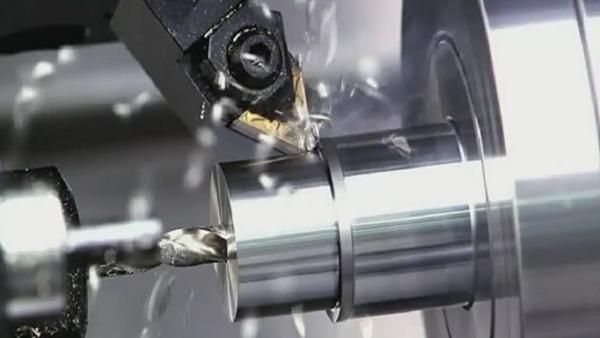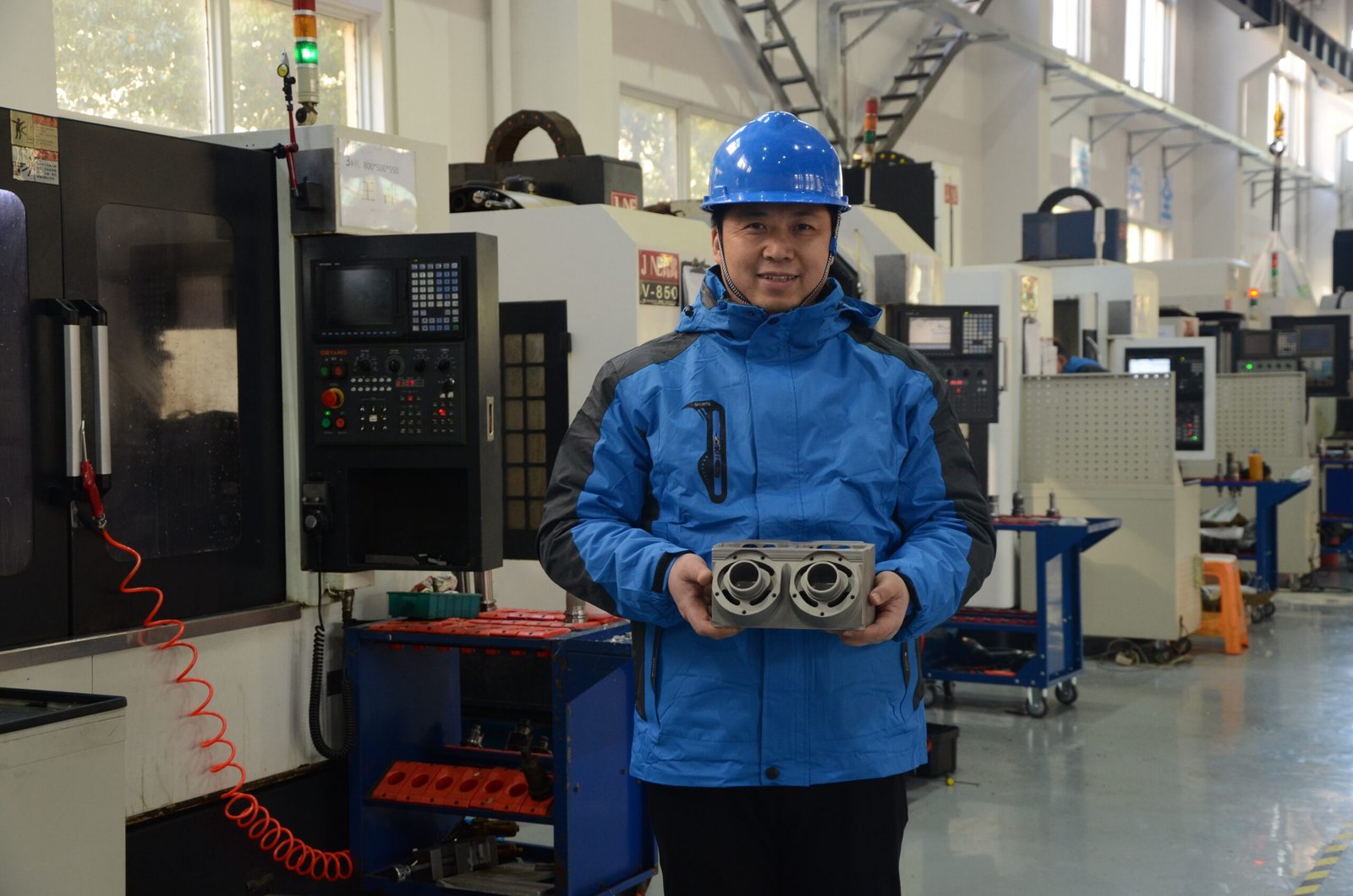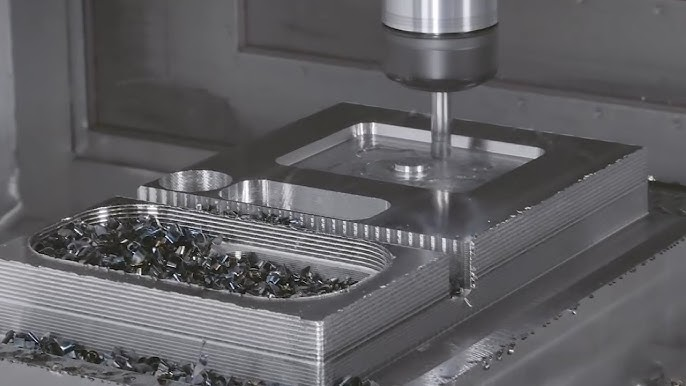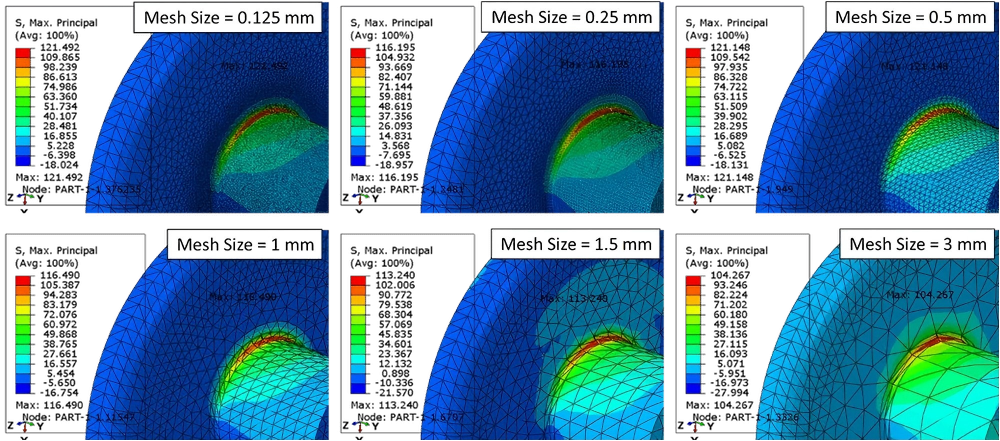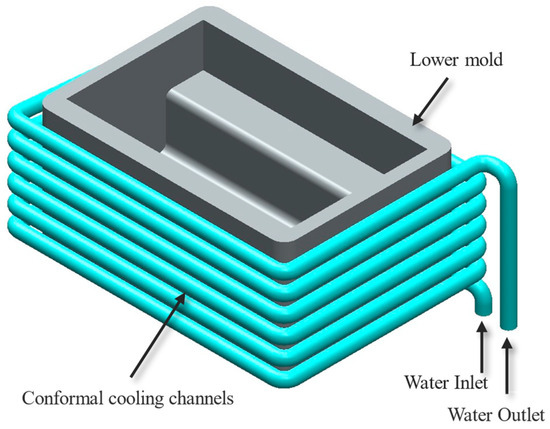Detecting the hidden leaks is not a piece of cake. It could be the most frustrating task when you don’t have any proper guidance. And, the worst thing is that these leaks can be dangerous and can pose a burden on your pocket. If we talk about the traditional method of detecting leaks, they are much reliable. Yes, they can miss some flaws that should be detected.
So, have a seat, as in this article, we will explore the most powerful technique of detecting gas leaks that is really beneficial for industries and is being used most commonly, the tracer gas testing. So, without wasting any second, let’s start right here!
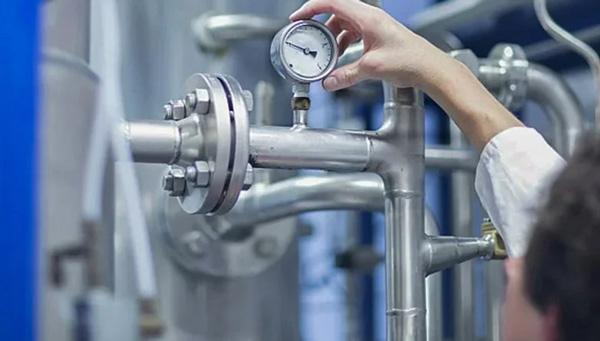
1) Fundamentals of Tracer Gas Leak Testing
Tracer gas leak testing is a method that is used to detect the gas leaks that are invisible to the human eye. This is a highly sensitive technique that can detect even minor leaks that are impossible to detect manually.
Working of a Gas Tracer
To detect the gas leak, first, the system ( of which you want to test the leakage) is introduced with a special gas. Then this gas escapes from the leakage point, even if it is very small. And, the sensors can detect this tracer gas easily because it is not abundant in the environment. So, as soon as it leaves the system, sensors will detect it in no time. Well, this technique is really helpful when other techniques fail.
This testing technique is especially useful for industries where safety, reliability, and perfection are the priority, for example, aerospace, medical devices, automotive, and refrigeration systems. Although other traditional methods are available, like soap bubble testing or pressure decay, this method is the most accurate one.
Common Tracer Gases
Helium
Helium is one of the most commonly used gases in leak detection. The good thing is that this is an inert, non-toxic, colourless, and odourless gas. So, it means it is safe to use. You know helium exists only 5 parts per million in the atmosphere, so even if there is a small leak, the tracer would be detected easily.
Did you ponder why this gas can escape from a small, extremely small hole? Well, because the size of helium atoms is very small, they can diffuse out from a tiny hole easily.
Hydrogen
Next, hydrogen is also a very common tracer gas. But, there’s one problem with using hydrogen: it is a flammable gas. So, to lessen its flammability, it is usually used by mixing it with other gases (typically 5% hydrogen with 95% nitrogen). And this blend is usually called forming gas. This gas is really reliable and cost-effective, too.
Another point to discuss here is that the size of Hydrogen is smaller than that of helium, so it can easily escape through a small hole. But due to flammability, you are required to use it in the form of forming gas and follow safety precautions.
Process Gases
Process gases mean the gases that are already processed by the system. Yes, sometimes, those gases are also used for detecting leaks. For example, in HVAC systems, refrigerants are used, and in the aerospace industry, oxygen has been used as a detecting gas.
You know, it is possible that on the spot you may not find helium or hydrogen, so the existing gases will also help you in detection at that time.
2) Techniques in Tracer Gas Leak Testing
Alright! Now, let’s talk about some of the most widely used techniques in Tracer gas leak detection. Each technique is useful for different applications, let’s have a look. Tracer gas leak testing can be carried out using several techniques, each suited for different applications and sensitivity levels.
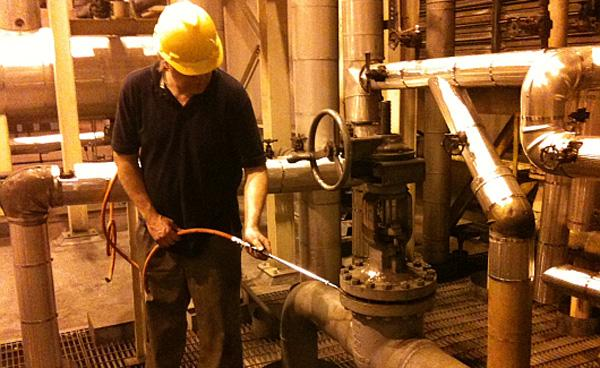
i) Sniffer Method
This is the most commonly used and simplest method. What happens is that the system is filled with tracer gas under high pressure. And then, the sniffer ( a handheld probe) is just passed around the system. The probe will detect the leaks instantly whenever it passes by any suspected point. Well, this method is widely used in automotive and HVAC systems.
ii) Vacuum Chamber Method
Next, the vacuum chamber method. This method is very precise and sensitive. In this method, the system ( that you are gonna test) is placed inside a vacuum chamber. If any gas leaks from the system, it will go into the chamber, and then it will be detected by sensors.
This method can detect very small leaks ( even at the molecular level). Therefore, this method is popular in aerospace, semiconductor, and medical device testing.
iii) Accumulation Chamber Method
In the accumulation method, the system is placed in an accumulation chamber ( at atmospheric pressure). You know if the system were to leak, then gas particles would start accumulating in the chamber. And when gas accumulates in the chamber, the concentration of environmental gases in the chamber would be changed. And finally, detectors will detect the gases easily.
To be honest, this method is less precise than vacuum chamber testing, but it is also helpful for detecting leaks in larger systems, for example, refrigeration and pipelines.
iv) Bombing Method
In the bombing method, a tracer gas penetrates inside the system via defects ( it is done by placing the system in a pressurized tracer gas environment). When the gas enters the system, the system is placed inside a vacuum chamber, and the leaks will be detected when the gas leaks out of the holes. This method is common for electronics, defence, and healthcare products.
3) Applications Across Industries
Due to the safety, quality, precision, and performance, this tracer gas testing is being used in many industries across the world. You know they have the ability to detect even nano-sized leaks, so they are useful for detection from automotive to public infrastructure.
- Automotive
You know, in the automotive industry, there are systems that should be 100% leak-free. And this test ensures it all. Via this testing, you can test airbags so that they may work properly in an emergency situation. Moreover, they are being used to test fuel tanks, pipelines, and EV battery cooling systems. Additionally, you can also check automotive air conditioning units to reduce refrigerant loss and improve system efficiency.
- Aerospace
We all know that there is no room for error in the aerospace industry. And, this test is widely used to test gas leaks in this industry. It is used to check for leaks in oxygen lines, fuel tanks, and hydraulic systems. You know that if there is even a minor error, it can compromise flight safety. Therefore, it is very necessary to test all the gas lines and maintain strict standards to avoid all types of risks.
- Semiconductor Manufacturing
Semiconductor fabrication relies on contamination-free processes. Tracer gas testing is applied to process chambers, vacuum lines, and gas delivery systems. This prevents contamination, ensures product quality, and reduces costly downtime in highly sensitive microelectronic manufacturing.
- HVAC/R Systems
To detect refrigerant leaks in heating, ventilation, air conditioning, and refrigeration systems, tracer gas testing is used. You know, if there are no leaks, it will help improve cooling efficiency and lower energy consumption. Apart from this, this testing also helps comply with the environmental regulations.
- Medical Devices
Medical devices also need precision and reliability. This test is used to check the performance of pacemakers, catheters, infusion pumps, and other medical devices. Due to the level of precision, it ensures the safety of the patient and helps devices work long-term. Ensuring leak-free operation, it helps protect patients and supports long-term device functionality.
- Water and Sewage Networks
Last, but not least, the municipal system also uses tracer gas testing to check the leaks in pipelines and storage tanks. It will ensure that water is clean and free of any type of contamination.
4) Sensitivity and Detection Limits
As we discussed, Tracer gas testing is very helpful in detecting even very small leaks, and its sensitivity ranges from 10⁻¹ to 10⁻¹² mbar·L/s. Due to this wide range, this is helpful for so many industries. As we discussed in applications, due to the precision, it is used in industries where safety can’t be compromised, for example, aerospace, semiconductor production, and medical devices.
If we compare this testing with others, then it is far better than them. For example, ultrasonic testing is used to detect only large leaks and can’t identify smaller leaks. And if we talk about the bubble test, although it is inexpensive, it is not accurate.
In contrast, tracer gas testing is quantifiable, repeatable, and highly reliable. Therefore, it is a preferred choice for most industries.
5) Advantages of Tracer Gas Leak Testing
Alright! Tracer gas leak testing has a lot of advantages for many industries. In this section, we will discuss the most common advantages of a tracer Leak test gas that other methods can’t match.
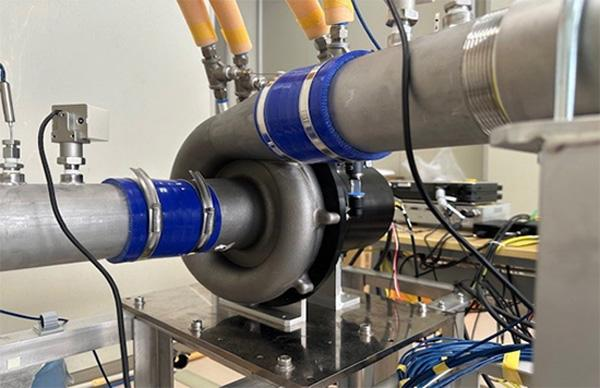
+ High Sensitivity: You know, extremely small leaks ( down to levels as low as 10⁻¹² mbar·L/s) can be detected through this technique, which is beneficial for industries that require high precision. So, this is one of the biggest advantages.
+ Non-Destructive Testing: The best thing about this technique is that it doesn’t destroy the system that you tested. Other techniques demand the system or parts of the system to be subjected to stress or some dismantling. But this tracer gas testing takes care of the integrity of your product and offers the best results.
+ Rapid Testing Capability: This is the fastest detecting technique ever. You have to waste time on arrangements or anything. Just fill up the gas and let the sensors detect the leakage. That’s all! This helps save your time and reduce stress.
+ Temperature and Material Independence: Other testing techniques like bubble or ultrasonic tests, can be affected by outside temperature. But this tracer gas testing is less affected by external temperature variations. So, this makes it applicable in any environment and makes it best for environments and makes it best for real-world applications.
+ Versatility Across Applications: As we already discussed, due to high accuracy, this testing technique is applicable for so many industries, from automotive to aerospace to HVAC and medical. It is a universally adaptable solution. It works effectively for sealed systems, pressurised components, and even delicate devices.
+ Enhanced Quality Assurance: As the results are quantifiable and repeatable, tracer gas testing is the best way to ensure the quality of a product. Therefore, it provides manufacturers with reliable data and best outcomes.
6) Limitations and Considerations
No, no doubt tracer gas testing has a lot of pros; still, there are some limitations and considerations regarding this test. You must know these factors as they directly impact how, where, and when this method should be applied.
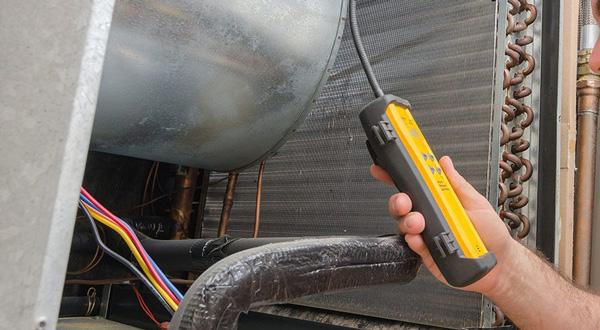
a) Higher Initial Cost
Yes, one of the biggest problems that is most commonly seen is the higher cost. You know the test requires some specialised detectors, vacuum chambers, and gas handling systems. So, all this requires a significant amount of investment. Its accuracy and efficiency often outweigh the costs, but some small-scale operations may find it difficult to justify the expenses.
b) Safety Concerns
Next, safety is another element that comes with tracer gas testing. Although helium is a non-toxic and inert gas, Hydrogen is a flammable gas that can cause some safety risks. Therefore, it should be handled safely and should be used in the form of forming gas. Moreover, take care of the proper ventilation, monitoring, and adherence to safety protocols.
c) Regular Equipment Calibration
To get the desired results, all the equipment should be calibrated properly. You know, with time, these could be resting or loss of functionality of quipemets. So, take care of all these things and establish a strict calibration schedule and quality control procedures. It will give you the quality results you deserve.
d) Training Requirements
Not everybody can perform this test efficiently. A proper understanding of the equipment and procedures is required. Misapplication or incorrect handling of tracer gases can compromise safety and test results. And, all these protocols put another layer of responsibility on the organisations implementing the method.
e) Application-Specific Limitations
It is true that even though this testing method is applicable for a wide range of applications, there are some fields where this much accuracy is not required. So, if your system is not that sensitive, then you can go for other methods also.
7) Future Trends and Innovations
Well, now let’s talk about what the expected innovations are in tracer gas testing in the future. This method is rapidly moving toward greater precision, efficiency, and sustainability, and these advancements are shaping the future of tracer gas testing across many industries.
Advancements in Detection Technology
First, it is worth noticing that new types of sensors and mass spectrometry improvements are enhancing sensitivity. Moreover, they are increasing the functionality and reducing the size of the equipment. And, it is possible that in the future, this test will be able to detect the defects that are now impossible with this technique, and will ensure better product reliability.
Integration with Automation
Automation is becoming a part of every system. The automated tracer gas system offers real-time monitoring, which helps save time and offers the best results. Moreover, robots and other automated systems improve consistency and ensure reliable results across large batches.
Environmental Considerations
You know helium is a costly gas and not very eco-friendly. Therefore, some other sustainable and eco-friendly gases are being introduced to overcome environmental pollution. Those gases just perform perfectly while reducing environmental impact and meeting stricter regulations.
Digital Connectivity
Additionally, the integration of IoT and cloud platforms with tracer gas testing enables remote monitoring, predictive maintenance, and data-driven decision-making. And all this has increased the efficiency and traceability of the process.
Overall, the tracer gas testing is becoming smarter, greener, and more advanced day by day. And, it will become an essential tool for modern quality control in the near future.
8) Conclusion
In a nutshell, the tracer gas testing technique is the best technique ever for detecting small leaks. Due to its high precision, it is being used across many industries, for example, automotive, aerospace, and medical devices. We know that the setup is a bit costly and requires some safety precautions, but the result it provides can outweigh the cost, and for safety purposes, just follow the precautionary measures. Well, it's just a cornerstone of modern leak detection.


